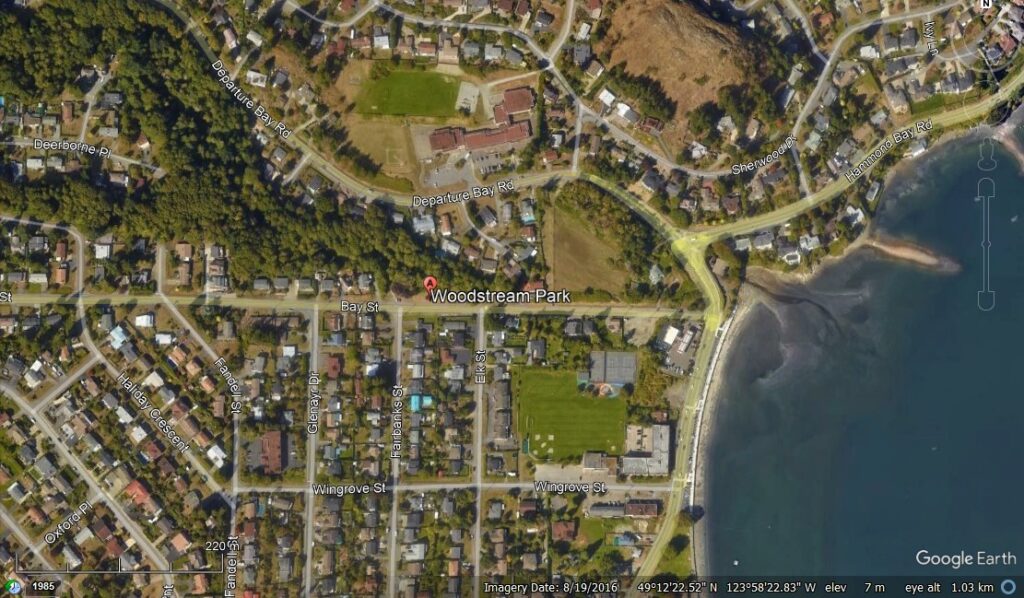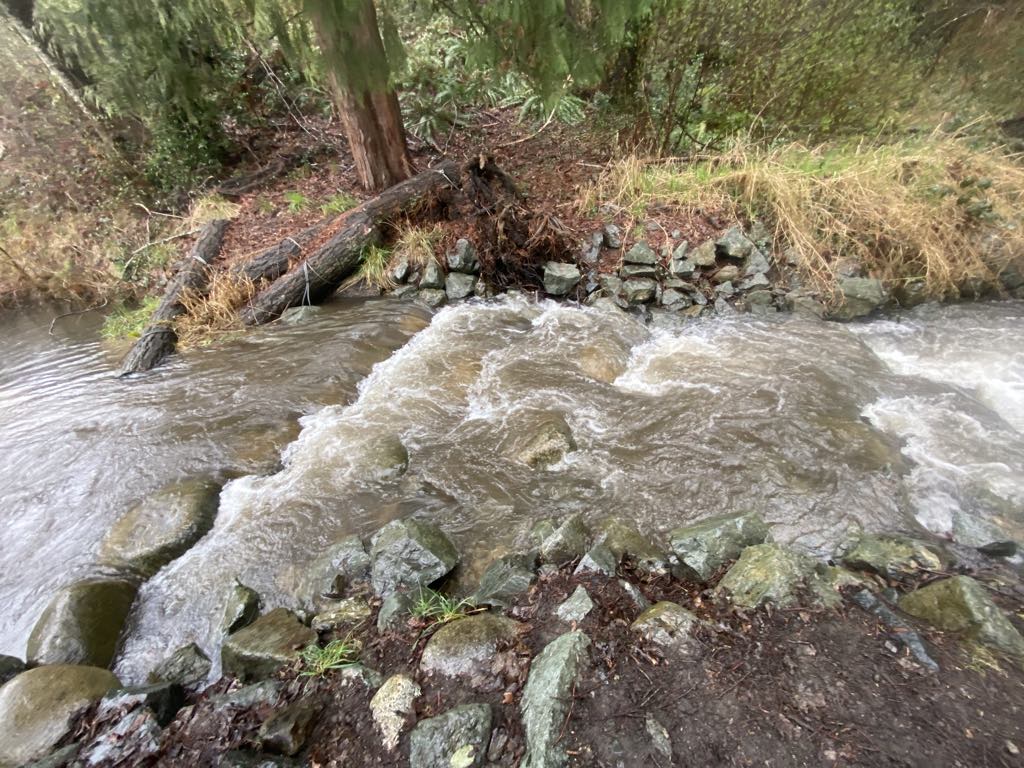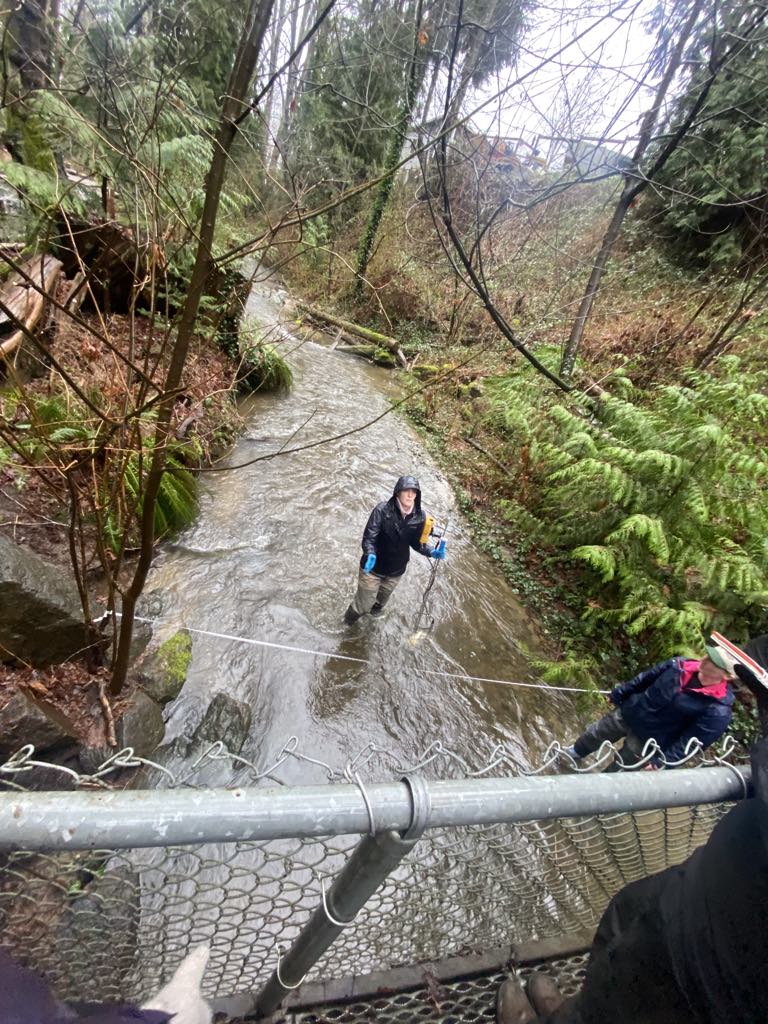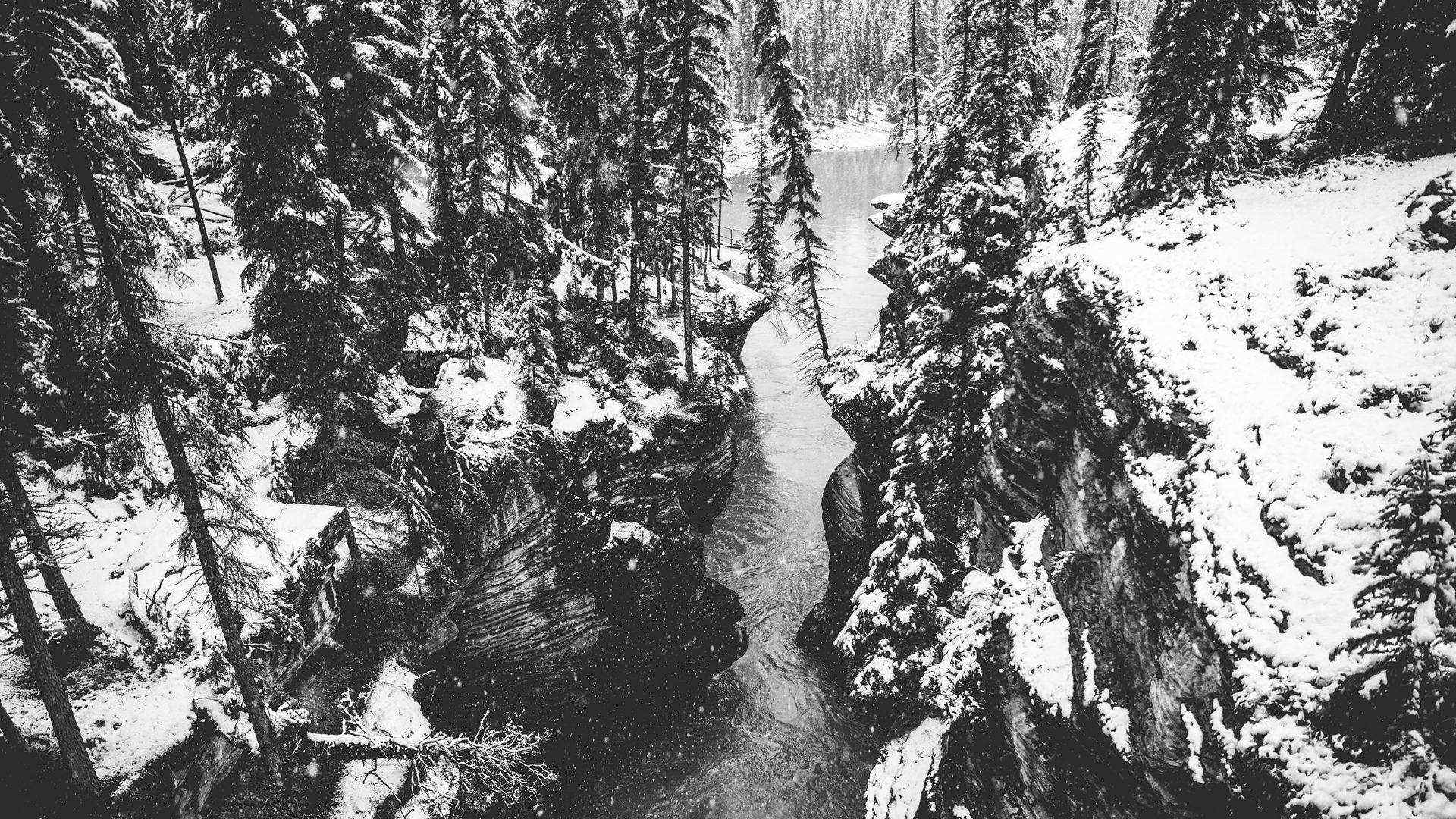Field Trip 3: Woodstream Park – Departure Bay Creek Restoration
Introduction
On Wednesday, February 28, 2024, the class of Geol 312 endured the wet, cold afternoon to learn about the Departure Bay Creek restoration project. Departure Bay Creek is found within Woodstream Park, in the Departure Bay area in central Nanaimo, as seen in Figure 1 below. The class convoyed to the site to meet with Jean-Michel, Ally, and Jessie, who all work alongside the BC Conservation Foundation. Jean-Michel is a retired ecologist who volunteers his time to help with the efforts at the stream, and Ally and Jessie are employed biologists working on this project with BC Conservation. The main purpose of this field trip was to gather information and learn about a real-life environmental issue along fish-bearing streams, so as Jean-Michel described the history of Woodstream Park, it was surprising to learn about the evolution and how it got to its current state.
Background Information
Woodstream Park, Departure Bay Creek, sits on a fault between Karmutsen Formation Basalts and the Nanaimo Group sediments, and the surrounding area has been subject to constant change. This area has been inhabited for over 3500 years by Snuneymuxw peoples and historically featured a winter village and burial ground (inVision Planning, 2006). Once colonizers arrived in the 1800s and coal was discovered beneath Nanaimo, this area was developed, and roads and houses were built. Soon after, upland farms were developed and the tidal marsh/estuary of Departure Creek disappeared (inVision Planning, 2006).
Today, Departure Bay is a sought-after place to live in Nanaimo, the urbanization growth here has seen tremendous growth. This is extremely notable especially as it changes the natural way water moves in an area. As there is more infrastructure there is less space for precipitation to seep into the ground, aside from gardens and the parks. This means, the water collects on roadways and drains directly into the Departure Bay Stream and out to the Ocean.
Woodstream Park, according to Jean-Michel, has been subject to much change over the years. Whether it was deforestation, replanting generations ago, the influx of invasive species, or the City dumping fill to bring up the levee, there’s been much cosmetic and habitation change. Now, the Park sits with minimal invasive species, dying out Red Alders from the replanting, reengineered levees and slopes with locally sourced sediments, and stream alterations for the Salmon that depend on this stream.

Figure 1: Woodstream Park aerial photo. East of the Park is Departure Bay Beach. Photo from Google Earth Pro.
Site Visit Overview
During the visit to Woodstream Park Jean-Michel had many interesting notes about the history of the park, as mentioned above. He also mentioned a lot about the coming steps and the future of this Park. When this area was colonized, they didn’t know the importance of fish-bearing streams, fish habitats, and native plants. Now, as we fix those issues, we see how much it affects the critters that depend on streams like this. Issues that have arisen since colonization include sedimentation and warming temperatures in the stream, and pollution.
Due to the changes in the stream and how it would naturally flow if it wasn’t subject to so much change, the sand load migrating downstream severely affects the fish habitat. To spawn, fish need gravel to lay their eggs. Gravel allows water to percolate through, which provides the needed oxygen for the eggs. Sand, however, sits on top of the eggs and is too heavy for the baby salmon to get out, killing them in the process. Additionally, rising temperatures have increased stream temperatures, confusing the salmon eggs. Salmon eggs develop faster in warm water, but if they hatch too quickly, it skews their life cycle and decreases survival rates. Also, if water temperatures increase to 20℃ or above, this can kill the salmon, at any period in their life cycle. To mend some of these current problems, BCCF, the City of Nanaimo, and Snuneymuxw peoples have gotten involved to remove sand from areas, create ripple-weir/fish ladder, and clean up invasive species from the Park. The ripple-weir/fish ladder can be seen in Figure 2 below. The ripple-weir is beneficial for fish as it helps fish climb up the stream at a gentle slope.

Figure 2: Ripple-weir/fish ladder built for spawning salmon to get upstream at Departure Bay Creek.
In addition to this problem, 6PPD-quinone (6PPDQ) has been found in the Departure Bay Creek. The antioxidant N-(1,3-Dimethylbutyl)-N′-phenyl-p- phenylenediamine (6PPD) is used to protect the rubber in tires from oxidation, extending the life of the tire. When oxidized, 6PPD is transformed into 6PPD-quinone (6PPDQ). 6PPDQ, along with other tire ingredients, can enter aquatic ecosystems through the transport of tire wear particles in runoff during a precipitation event. The mass mortality of coho salmon following precipitation events in urban areas led to the discovery that 6PPDQ is the likely cause due to coho salmon’s relatively high sensitivity to 6PPDQ. The assessment of 6PPDQ toxicity to other aquatic species has expanded, but it has focused on fish (Prosser et al., 2023). Ally described that even a teaspoon in an Olympic pool is lethal for juvenile coho. This is a worldwide issue with ongoing research, but it makes me want to walk more places rather than drive.
Aside from the problems at Woodstream Park, the class of Geol 312 also measured the flow rate in the creek using BCCF’s fancy flow measuring device. As we weren’t trying to be precise with the measurement, but just were interested in how the flow is determined, the exact value of the flow rate that day is unknown. Nonetheless, it was neat to learn how quickly this machine makes it. Ally can be seen in Figure 3 below, holding the flow rate measuring device, with Jessie to the right of the image.

Figure 3: Ally and Jessie explaining how the flow rate measuring instrument works.
Concluding Comments
Overall, I found my experience at Woodstream Park extremely interesting and insightful. I have an interest in biology and I find the struggles with urbanization and landscape changes extremely interesting. The project Jean-Michel, Ally, and Jessie are working on with BCCF at Departure Bay Creek is very valuable and what they learn and can implement here can be transferred all over to other Ripearn Zones affected by urbanization. Hopefully, more research about 6-PPDQ will be found soon and there is a way to help the fish have a better success rate in streams that are fed by storm drains.
I’m looking forward to following along with the progress of Departure Bay Creek and hoping for positive outcomes next salmon spawning season.
References
inVision Planning. (2006). Departure Bay Neighbourhood Plan. City of Nanaimo, May 2006. https://www.nanaimo.ca/docs/property-development/community-planning-and-zoning/departurebay-neighbourhoodplan6895d83a1b316d6b9fc9ff0f001037d2.pdf
Prosser, R.S., Salole, J., Hang, S. (2023). Toxicity of 6PPD-quinone to four freshwater invertebrate species,
Environmental Pollution, vol 337. https://doi.org/10.1016/j.envpol.2023.122512.
